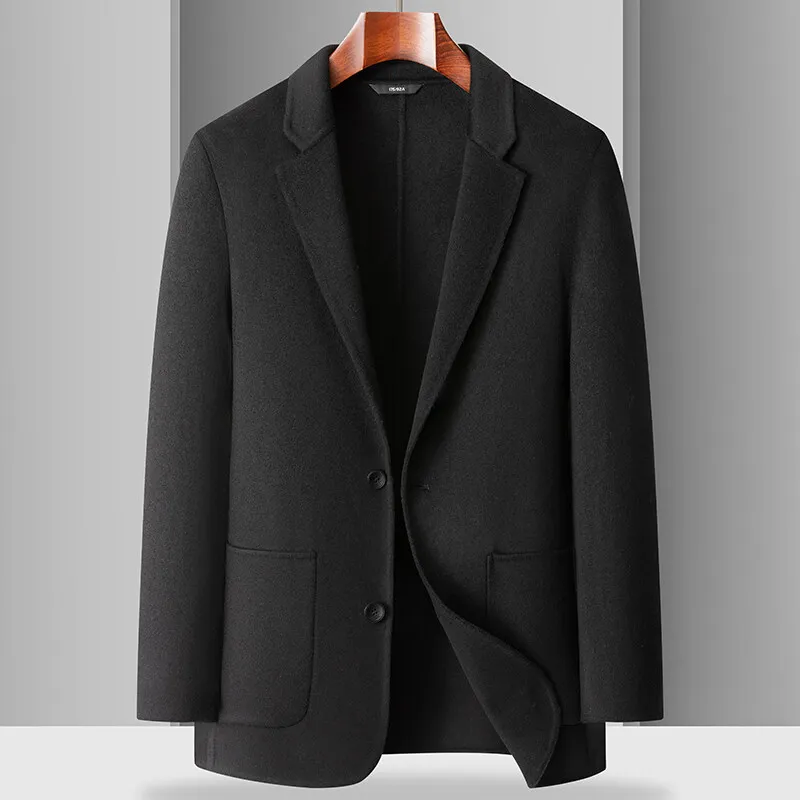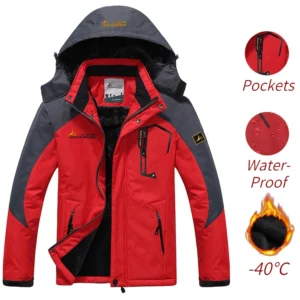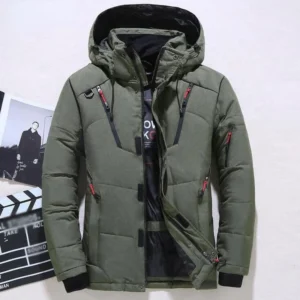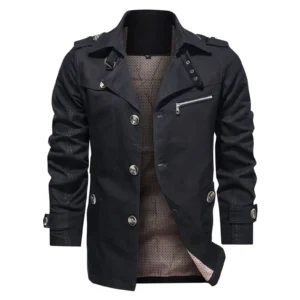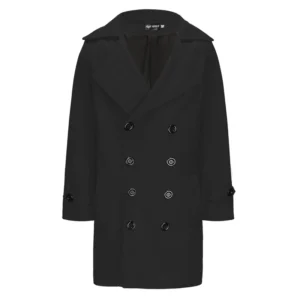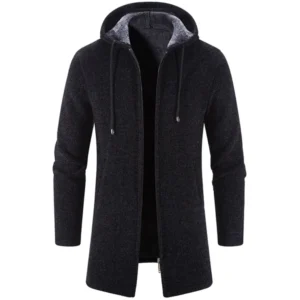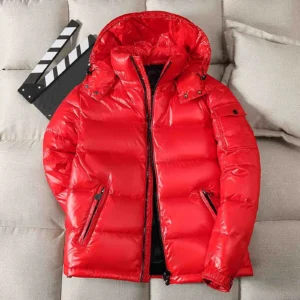Why Your Wool Car Coat Is Perfect for Winter Layering
A wool car coat is a versatile piece of outerwear that typically extends to mid-thigh, featuring a structured collar and front button closure. These classic coats strike the perfect balance between formal overcoats and casual jackets, making them ideal centerpieces for your winter wardrobe.
What makes wool such an exceptional material for winter is its natural properties:
- Superior insulation that traps body heat even in freezing temperatures
- Natural moisture-wicking ability that keeps you dry by pulling sweat away from your body
- Breathability that prevents overheating when moving between outdoor cold and indoor heat
- Impressive wind resistance without the bulk of synthetic materials
The definition and background on wool car coats reveals their practical origins—these coats were originally designed for early motorists who needed protection from the elements while driving open-top automobiles. Today’s wool car coats for men maintain that heritage of practicality while adding modern touches.
What truly sets car coats apart for winter layering is their thoughtful design. With a slightly roomier cut than many other coat styles, they’re specifically constructed to accommodate multiple layers underneath without sacrificing mobility or creating a bulky appearance. This intentional design feature makes them the perfect outer layer in a comprehensive winter outfit strategy, as detailed in our ultimate guide to wool car coats for men.
Understanding the Science of Winter Layering
Effective winter layering isn’t just about piling on clothes—it’s a scientific approach to thermal regulation that works with your body’s natural processes.
1. The Three-Layer System
The foundation of winter warmth relies on a strategic three-layer approach:
- Base layer: Sits directly against your skin to wick away moisture
- Mid-layer: Traps warm air and provides insulation
- Outer layer: Blocks wind and repels moisture (your wool car coat)
2. How Temperature Regulation Works
When properly layered, the spaces between fabrics trap body-heated air, creating natural insulation zones. This system allows you to adjust your temperature by adding or removing layers as conditions change. Research shows that air trapped between multiple thin layers provides better insulation than a single thick layer, explaining why proper layering can keep you comfortable in temperatures 15-20 degrees lower than a single heavy garment.
3. Material Interactions
Different materials perform specific functions in your layering system. Merino wool base layers wick moisture away from the skin, while mid-layers made of materials like cashmere or fleece trap heat effectively. Your wool car coat then provides the final protective barrier. Understanding how these wool coats keep you warm in winter conditions is crucial to maximizing their effectiveness.
For truly effective winter comfort, the art of layering under cashmere and similar fine materials requires attention to both function and comfort—creating a system where each layer complements the others rather than working against them.
Selecting the Perfect Base Layer to Wear Under Your Wool Car Coat
Your base layer serves as the foundation of your winter layering system. It’s the garment that sits directly against your skin, so choosing the right material and fit is essential for both comfort and temperature regulation.
Ideal Base Layer Materials
The best base layers for winter combine moisture management with comfort:
- Merino wool: A natural superstar that can absorb up to 30% of its weight in moisture while still feeling dry against the skin. It also resists odors naturally.
- Performance synthetics: Materials like polyester and nylon blends engineered specifically for moisture-wicking and quick drying.
- Silk: A luxury option that provides surprising warmth despite its lightweight nature, making it perfect for formal occasions.
Avoid cotton for winter base layers, as it absorbs moisture but dries very slowly. Once wet, cotton can actually pull heat away from your body, leaving you cold and uncomfortable.
Fit Considerations
Your base layer should fit close to the body without restricting movement. Think of it as a second skin that moves with you rather than against you. For maximum effectiveness under a wool car coat, look for:
- Seamless or flat-seam construction to prevent chafing
- Slight stretch for mobility
- Long enough to tuck in and stay tucked
- No bulky details that might create pressure points under other layers
Understanding how merino wool compares to regular wool coats helps in appreciating why certain materials perform better in a layered outfit. For both casual and formal occasions, having quality base layers allows you to make the most of your winter coat collection.
Mid-Layer Magic: Insulation Options for Maximum Warmth
The mid-layer is where the real insulating magic happens in your winter outfit. This critical component traps the warm air close to your body, creating a thermal buffer between your base layer and your wool car coat.
Mid-Layer Options and Their Benefits
| Mid-Layer Type | Best For | Warmth-to-Weight Ratio | Layering Profile |
|---|---|---|---|
| Lightweight Merino Sweater | Daily wear, Office | High | Slim |
| Cashmere Pullover | Formal settings, Moderate cold | Very High | Medium-slim |
| Fleece Vest | Active days, Core warmth | Medium | Medium |
| Down Vest | Extreme cold, Minimal bulk | Extremely High | Medium |
| Cardigan | Versatile, Easy to adjust | Medium | Medium-bulky |
| Unstructured Blazer | Business casual | Medium-low | Medium |
The beauty of mid-layers is their versatility. On moderately cold days, a single quality mid-layer beneath your wool car coat might provide sufficient warmth. As temperatures drop, you can combine options—like a thin merino sweater under an unstructured blazer—for additional insulation without excessive bulk.
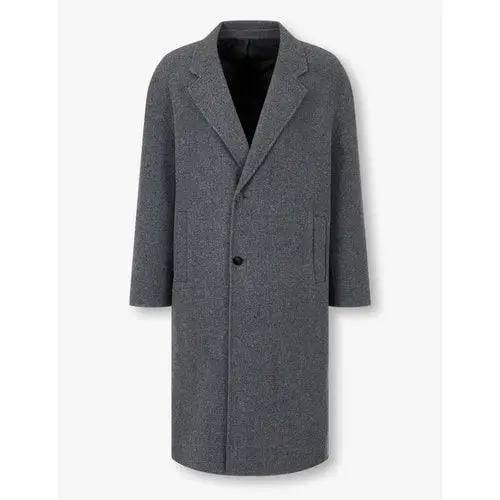
When selecting mid-layers, consider how they’ll pair with your insulated coat options for maximum effectiveness. The goal is to create comprehensive insulation that works as a system rather than as individual pieces.
For particularly cold days, lightweight down or synthetic insulated vests provide exceptional warmth for the core without adding bulk to the arms, allowing your wool car coat to fit comfortably over the entire ensemble.
Mastering the Art of Layering Without Bulk
One of the biggest challenges when layering for winter is avoiding the “puffy snowman” look. With thoughtful selection and arrangement of garments, you can stay warm without sacrificing your silhouette.
1. Choose Thin, High-Performance Materials
Modern technical fabrics offer impressive warmth-to-thickness ratios. Ultra-fine merino wool at 150-170g/m² provides remarkable insulation despite being just a few millimeters thick. Similarly, premium cashmere delivers exceptional warmth without the bulk of lower-quality knits.
2. Embrace the Power of Compression
Slightly compressing layers actually improves their insulating properties by reducing air gaps that can lead to heat loss. Look for base layers with a touch of elastane that hug the body without restricting movement.
3. Layer Thinner in Movement Areas
Keep thinner layers around joints (elbows, shoulders) and thicker insulation around your core. This strategic distribution maintains mobility while protecting vital organs.
4. Consider the Order of Layers
Always put the thinnest, most form-fitting layers closest to your body, gradually increasing in thickness. Each layer should fit comfortably over the previous one without stretching or straining.
5. Utilize Technical Vests
A thin insulated vest adds significant core warmth without adding bulk to the arms—precisely where most coats become tight when over-layered.
By focusing on quality over quantity and understanding how different materials perform when combined, you can create a winter outfit that keeps you warm while maintaining a clean, tailored appearance under your wool car coat.
Finding the Right Fit: Sizing Your Wool Car Coat for Layering
The success of your winter layering strategy depends significantly on having a wool car coat with adequate space for additional garments. Here’s how to ensure your coat accommodates layers without looking oversized:
Key Fit Checkpoints for Layering
- Shoulders: With layers underneath, the coat’s shoulder seams should align with or sit just outside your natural shoulder edge
- Chest: Button the coat fully—you should be able to slide a flat hand inside comfortably but not make a fist
- Sleeves: Should extend to your wrist bone with arms extended, allowing ¼” to ½” of shirt cuff to show
- Range of motion: Can you comfortably hug yourself without the back feeling tight?
- Armholes: Should allow for comfortable movement without excessive fabric under the arms
Signs Your Coat Won’t Accommodate Layers
- Pulling across the upper back when crossing your arms
- Visible strain at button closures
- Restricted arm movement
- Sleeve length that becomes too short when wearing layers
- Collar that won’t close properly over layered garments
Understanding how to wear a wool car coat properly is essential for both comfort and style. When purchasing a new coat with layering in mind, consider sizing up if you’re between sizes, but be careful not to go too large—a coat that’s too big will look sloppy rather than sophisticated.
Different coat styles also affect layering capacity. Traditional car coats often have a boxier cut that accommodates layers more readily than their slim-fit counterparts. Exploring various wool coat options can help you find the perfect balance between tailoring and layering space.
Classic Layering Combinations for Business Settings
Creating polished, professional outfits with your wool car coat requires thoughtful layering that balances warmth with workplace appropriateness. Here are winning combinations that deliver both style and function:
The Executive Ensemble
- Base: Light blue cotton-twill dress shirt with spread collar
- Mid-layer: Navy merino wool V-neck sweater
- Outer layer: Charcoal wool car coat
- Accessories: Burgundy silk tie, gray cashmere scarf
- Bottom: Charcoal wool trousers
- Footwear: Brown cap-toe leather boots
This combination creates a streamlined silhouette perfect for important meetings. The thin merino sweater adds warmth without bulk, while the dress shirt provides a formal foundation.
The Business Casual Classic
- Base: White cotton oxford button-down shirt
- Mid-layer: Light gray cashmere cardigan
- Outer layer: Navy wool car coat
- Accessories: Patterned wool pocket square, camel scarf
- Bottom: Khaki wool-blend trousers
- Footwear: Brown suede chukka boots
This versatile outfit works for offices with relaxed dress codes while maintaining professional polish. The cardigan provides easy temperature adjustment throughout the day.

The Smart Separates
- Base: Striped cotton-blend dress shirt
- Mid-layer: Unstructured navy blazer
- Outer layer: Camel wool car coat
- Accessories: Olive knit tie, navy and white patterned scarf
- Bottom: Medium gray wool trousers
- Footwear: Burgundy leather loafers
The blazer mid-layer creates a sophisticated, tailored appearance while adding substantial warmth. The contrasting coat color elevates the entire outfit.
When creating business layers, focus on thin, high-quality materials that won’t create unnecessary bulk or wrinkle easily beneath your coat. Natural fibers like merino wool, cashmere, and fine cotton provide the best combination of refinement and performance.
Casual Weekend Layering: Comfort Meets Style
Weekend winter style allows for more creative and comfortable layering while still looking put-together. Your wool car coat can transition seamlessly from workweek to weekend with these well-crafted casual combinations:
The Refined Relaxed Look
- Base: Charcoal waffle-knit henley
- Mid-layer: Navy shawl-collar cardigan
- Outer layer: Medium gray wool car coat
- Accessories: Forest green wool beanie, burgundy and navy scarf
- Bottom: Dark indigo selvedge denim
- Footwear: Brown leather boots
This outfit offers substantial warmth with a rugged yet refined aesthetic. The textured henley and chunky cardigan create visual interest while providing serious insulation.
The Outdoorsman
- Base: Burgundy flannel shirt
- Mid-layer: Olive quilted vest
- Outer layer: Brown wool car coat
- Accessories: Rustic leather gloves, neutral wool scarf
- Bottom: Khaki moleskin trousers
- Footwear: Waterproof hiking boots
Perfect for weekend adventures, this combination protects against the elements while maintaining style. The vest provides core warmth without restricting arm movement.
The Coffee Run Casual
- Base: Gray cotton long-sleeve t-shirt
- Mid-layer: Navy quarter-zip lightweight sweater
- Outer layer: Camel wool car coat
- Accessories: Blue denim baseball cap, simple gray scarf
- Bottom: Black jeans
- Footwear: White leather sneakers
This laid-back look offers clean lines and comfortable warmth for casual weekend activities. The quarter-zip adds temperature control for indoor/outdoor transitions.
Finding stylish wool car coat outfit ideas for men doesn’t mean sacrificing comfort. The versatility of wool blend coats makes them particularly suitable for casual settings where you need adaptability.
For weekend wear, embrace layering pieces with more texture and visual interest than you might choose for the office. Flannel shirts, chunky knits, and casual vests all pair beautifully with the structured elegance of a wool car coat.
Mens Heavy Winter Coat, Mens Insulated Coat, Mens Parka Coat
Price range: $175.52 through $237.36 Select options This product has multiple variants. The options may be chosen on the product pageMens Big and Tall Winter Coats, Mens Down Coat, Mens Hooded Winter Coat, Mens Puffer Coat
Price range: $126.44 through $217.01 Select options This product has multiple variants. The options may be chosen on the product pageMens Big and Tall Winter Coats, Mens Hooded Winter Coat
Price range: $80.32 through $106.68 Select options This product has multiple variants. The options may be chosen on the product pageMens Double Breasted Pea Coat, Mens Wool Blend Coat, Mens Wool Pea Coat
Price range: $136.84 through $157.36 Select options This product has multiple variants. The options may be chosen on the product pageMens Cashmere Overcoat, Mens Hooded Winter Coat, Mens Wool Blend Coat
Price range: $128.72 through $139.68 Select options This product has multiple variants. The options may be chosen on the product pageMens Hooded Winter Coat, Mens Insulated Coat, Mens Puffer Coat, Mens Quilted Coat
Price range: $139.88 through $177.72 Select options This product has multiple variants. The options may be chosen on the product page
Strategic Accessorizing to Enhance Your Layered Look
The right accessories not only add style to your winter layers but also provide crucial warmth at vulnerable points. When wearing a wool car coat, thoughtful accessory choices can elevate your entire look while improving comfort.
Scarves: The Essential Winter Companion
Scarves fill the gap between your coat collar and neck, preventing cold air from entering. For wool car coats:
- Materials: Cashmere, merino wool, and wool-silk blends offer warmth without bulk
- Styles for Car Coats: Medium-width scarves (around 12 inches) in medium length work best
- Tying Techniques:
- The simple drape for milder days and formal occasions
- The Parisian knot for added neck protection
- The once-around for maximum coverage in extreme cold
Hats That Complement Car Coats
Select headwear that balances warmth with the refined nature of your coat:
- Wool felt fedoras or trilbies maintain formality while protecting from cold
- Fine-knit beanies in neutral colors work well for casual settings
- Classic wool flat caps offer a timeless option that pairs perfectly with car coat styling
- Avoid: Extremely casual styles like pom-pom hats or sports team beanies
Gloves: The Finishing Touch
Your hands deserve protection that maintains dexterity:
- Leather gloves with cashmere lining provide elegance and warmth for business settings
- Wool-blend gloves offer versatility for casual wear
- Tech-friendly options with conductive fingertips prevent constant removal
The best accessories enhance your layered look without competing with it. Choose colors that either complement or thoughtfully contrast with your coat, and maintain consistency in the level of refinement across all pieces.
Material Mastery: Fabrics That Work Best Together
Creating effective winter layers isn’t just about what materials you choose—it’s about how these fabrics interact when worn together. Understanding these relationships ensures both comfort and performance from your winter wardrobe.
Fabric Compatibility Guide
| Base Material | Best Mid-Layers | Notes on Interaction |
|---|---|---|
| Merino Wool | Cashmere, Merino, Alpaca | Natural fibers against natural fibers minimize friction and maximize breathability |
| Performance Synthetics | Technical fleece, Down | Creates a high-efficiency moisture management system |
| Silk | Cashmere, Fine Merino | Luxurious combination with minimal bulk; perfect under a wool car coat |
| Cotton (limited use) | Wool blends only | Cotton base can trap moisture; needs highly breathable mid-layers |
Key Fabric Properties for Layering
The unmatched benefits of wool car coats include their compatibility with various materials. However, some combinations work notably better than others.
Smooth fabrics with minimal texture reduce friction between layers, allowing for better movement and less bunching. When combining different materials, arrange them with the smoothest fabrics closest to your body and progressively more textured materials outward.
Avoid combinations that create static electricity (like synthetic base layers with wool mid-layers), as they can cause discomfort and clothing to cling awkwardly.
The weight balance between layers should progress from lightest (base) to heaviest (outer), with the exception of technical mid-layers like down vests, which can be lightweight yet very warm.
Advanced Layering Techniques for Extreme Cold
When temperatures plummet below freezing, standard layering approaches need enhancement. A wool car coat can still serve as your outer layer in extreme conditions with these specialized techniques.
1. Deploy Technical Base Layers
In severe cold, upgrade to thermal base layers specifically engineered for extreme conditions:
- Look for base layers with zoned construction (thicker insulation in core areas)
- Consider brushed-interior fabrics that trap additional warm air
- Choose compression fits that maximize contact with skin for better heat retention
2. Add Strategic Interim Layers
Between your base and mid-layers, add ultra-thin thermal materials:
- Lightweight down shirts or pullovers (800+ fill power)
- Thin merino wool or silk intermediary layers
- Heat-reflective garments that return body heat
3. Employ the Air Gap Principle
Create intentional tiny air spaces between certain layers:
- Choose a slightly looser mid-layer over a snug base layer
- This trapped air heats up from body warmth, creating additional insulation
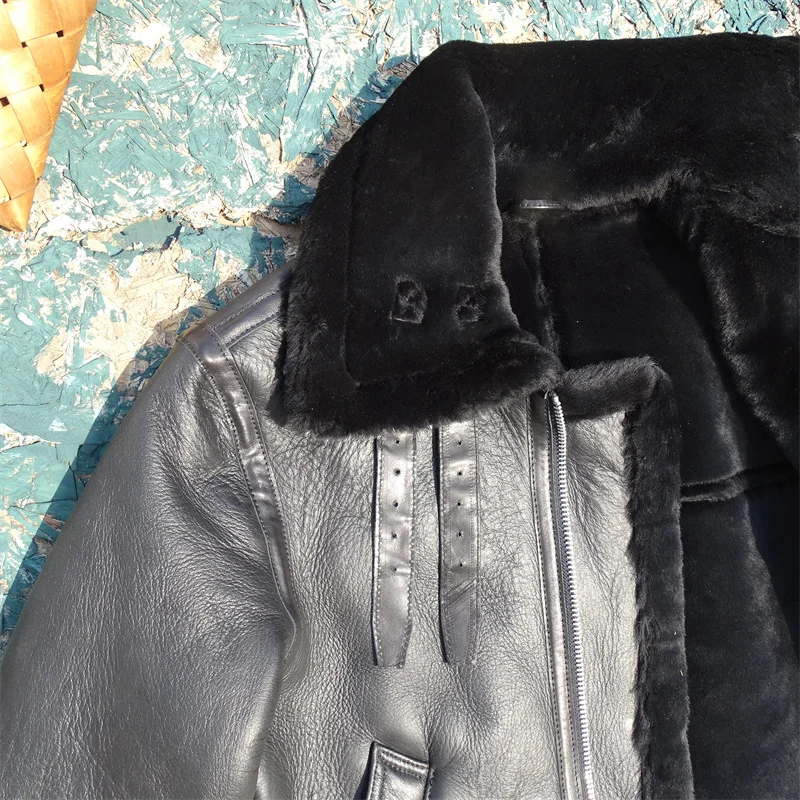
4. Consider Supplemental Warmth Systems
For extreme conditions, traditional layering can be enhanced with:
- Heated vests or base layers powered by rechargeable batteries
- Chemical heat packs strategically placed in pockets
- Windproof membrane mid-layers under your wool car coat
For the most challenging weather, exploring heavy winter coat options to layer over other garments provides maximum protection. The techniques used when layering with leather jackets can also provide valuable approaches for wool coat layering in extreme conditions.
How to Care for Your Layered Garments
Proper maintenance of your winter layers ensures they’ll continue performing well season after season. Each material in your layering system requires specific care to maintain its insulating properties and appearance.
Wool Car Coat Care
- Brush after each wear with a clothes brush to remove surface dirt
- Air out for 24 hours before storing to release moisture and odors
- Dry clean only 1-2 times per season—excessive cleaning can damage the wool
- Store on a shaped wooden or padded hanger to maintain structure
- Use a cloth garment bag for off-season storage to protect from moths
Base Layer Maintenance
- Wash after each wear as these collect body oils and perspiration
- Follow care label instructions—merino often requires gentle cycle and air drying
- Avoid fabric softeners which can compromise moisture-wicking properties
- Lay flat to dry rather than hanging to prevent stretching
Mid-Layer Longevity Tips
- Air out sweaters between wearings rather than washing each time
- Use wool-specific detergents for natural fiber mid-layers
- Store folded with acid-free tissue paper to prevent creasing
- Keep knitwear in drawers rather than hanging to prevent stretching
Preventing Wear at Friction Points
- Rotate your layering pieces to distribute wear evenly
- Apply preventative patches to inner elbows and underarms of valuable pieces
- Consider lightweight garment shields where layers rub consistently
With proper care, quality layering pieces can last for many years, making them wise investments for your winter wardrobe. The natural durability of wool makes car coats particularly long-lasting when maintained correctly.
Frequently Asked Questions About Layering with a Wool Car Coat
Can I layer a blazer under a car coat?
Yes, this is an excellent pairing! Choose an unstructured or half-lined blazer for less bulk. Your car coat should be sized to accommodate this thicker mid-layer—ideally, you should be able to button the coat comfortably with the blazer underneath. This combination works particularly well for business settings.
How many layers is too many?
Most effective layering systems consist of 3-4 layers total (including your coat). Beyond this, you risk restricted movement and excessive bulk. Instead of adding more layers, focus on choosing higher-performing materials for your existing layers. If you’re still cold with 4 quality layers, it might be time to consider a heavier outerwear option.
How do I prevent sweating when moving between indoor and outdoor environments?
The key is creating a system you can easily adjust. Opt for a zippered mid-layer that can be quickly opened for ventilation. Choose base layers with excellent moisture management properties, and consider slightly loosening your scarf and unbuttoning your coat immediately upon entering heated buildings to release excess warmth before sweating begins.
Can I wear a wool car coat in rain or snow?
Most wool naturally repels light moisture, but heavy precipitation will eventually soak through. For light rain or snow, your wool coat will provide adequate protection. For heavier conditions, apply a fabric protector specifically formulated for wool, and consider carrying a compact umbrella. Always allow your coat to dry naturally at room temperature if it becomes wet.
Will layering stretch out my coat?
When done correctly, layering shouldn’t damage your coat. However, consistently overstuffing a coat with too many thick layers can eventually stress the seams and fabric. If you regularly need substantial layering, consider purchasing your coat one size larger than your normal fit or selecting a style specifically cut for layering.
Common Layering Mistakes and How to Avoid Them
Mistake: Creating Excessive Bulk
Problem: Layering too many thick garments creates a puffy, restricted feeling and unflattering silhouette.
Solution: Choose thinner, higher-performing materials. A premium lightweight merino sweater provides more warmth than a thick, low-quality acrylic one while adding significantly less bulk. Focus on quality over quantity in your layers.
Mistake: Overlooking Proper Sizing
Problem: Layers that are too tight restrict movement and reduce insulating air pockets; too loose creates unnecessary bulk.
Solution: Base layers should fit snugly but not tightly. Mid-layers should allow comfortable movement without excess fabric. Your wool car coat should be sized to accommodate your typical layering strategy—potentially a half-size larger than you’d buy for wear with just a shirt.
Mistake: Ignoring Temperature Transitions
Problem: Layering perfectly for outdoor temperatures often leads to overheating when indoors.
Solution: Create a system of layers that allows for easy adjustment. Zippered vests, cardigans, and button-up mid-layers allow for temperature regulation without completely removing garments.
Mistake: Choosing Incompatible Fabrics
Problem: Certain fabric combinations create friction, static, or moisture management issues.
Solution: Generally, layer similar fabrics together (natural with natural, synthetic with synthetic) or choose specifically compatible combinations. Understanding if a 100 percent wool coat is best for winter helps in making more informed layering decisions.
Mistake: Creating Unbalanced Proportions
Problem: Bulky layers under a fitted coat create an unflattering, compressed appearance.
Solution: Maintain balanced proportions throughout your outfit. If using thicker mid-layers, ensure your coat has room to accommodate them without straining. Consider how puffer coats compare to wool coats for warmth when making outerwear choices based on your layering needs.
By avoiding these common pitfalls, you’ll create layered winter outfits that provide optimal warmth while maintaining a refined appearance. The key is thoughtful selection of complementary pieces that work together as a system rather than competing components.

